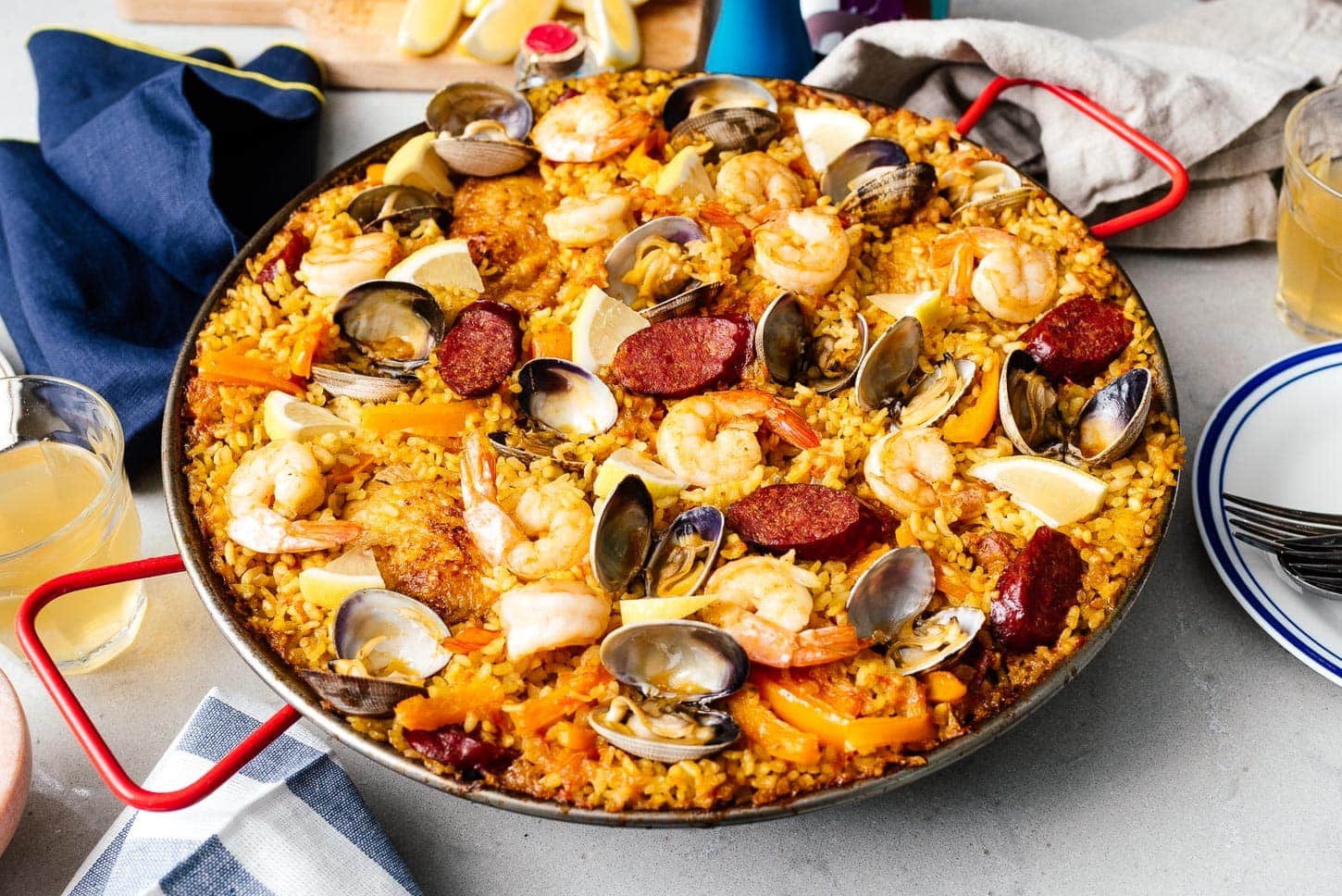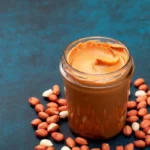
Paella’s roots can be traced back to the 18th century in the Valencia region of Spain. It emerged as a rustic, communal dish prepared by farmers and field laborers. The practice of cooking paella outdoors over open fires fostered a sense of community and celebration. Over time, paella evolved into a culinary tradition that continues to be cherished today.
The term “paella” holds historical significance as it originates from the Old Valencian word “paella,” meaning “pan.” This linguistic connection emphasizes the central role of the pan in paella preparation. The paellera’s wide, shallow shape is essential for achieving the desired texture of the dish, including the coveted socarrat, the crispy layer of rice at the bottom.
The traditional paella pan, or “paellera,” is an iconic element of paella preparation. It typically measures between 8 to 12 inches (20 to 30 cm) in diameter, depending on the number of servings required. This design allows for even cooking, ensuring that the rice absorbs the flavors of the ingredients while maintaining its distinct texture.
Rice cultivation in the Valencia region dates back over 1,200 years. The introduction of rice by the Moors in the 8th century was a pivotal moment in the region’s agricultural history. This cultivation laid the foundation for paella’s evolution as a rice-based dish that would become emblematic of Spanish cuisine.
The Moors’ influence on paella cannot be overstated. Their introduction of rice cultivation and the use of saffron as a spice left an indelible mark on the dish. Saffron, in particular, with its vibrant color and distinct flavor, became a hallmark of paella, contributing to its sensory appeal.
The choice of rice in paella is a critical factor in achieving the dish’s desired texture. Short-grain rice varieties like Bomba and Calasparra are favored due to their ability to absorb liquid without becoming overly soft. This characteristic ensures that the rice grains remain separate and slightly firm, a defining feature of a well-executed paella.
Saffron, known as “red gold,” is one of the world’s most expensive spices, with prices that can soar to as high as $3,000 per pound. The use of saffron in paella is not only a testament to its importance but also adds a layer of luxury to the dish. Its vibrant hue and distinctive flavor make it an indispensable ingredient in paella.
In recognition of paella’s global significance, Valencia declared September 20th as World Paella Day in 2018. This celebration serves as a testament to the dish’s enduring popularity and its ability to bring people together from different corners of the world to savor its flavors and cultural significance.
In 2001, a remarkable feat was achieved when chefs in Valencia cooked the world’s largest paella. This monumental dish required an astonishing 13,000 pounds (5,897 kg) of rice, 1,100 pounds (498 kg) of olive oil, and a variety of other ingredients. This impressive culinary endeavor exemplified the communal spirit of paella, highlighting its role in uniting people through a shared meal.
Spain is renowned for hosting numerous paella competitions, where skilled chefs and enthusiastic home cooks vie to create the finest paella dishes. These competitions showcase the rich culinary traditions associated with paella and the ongoing quest for perfection in its preparation. The diverse entries reflect the adaptability of paella, with each participant putting their unique spin on this iconic dish.
Paella comes in various regional variations, with the three most well-known types being Valencian paella, seafood paella, and mixed paella. These variations reflect the diverse ingredients available in different parts of Spain and cater to various tastes and preferences.
Valencian paella represents the traditional version of the dish. It often includes rabbit, chicken, and vegetables like green beans and white beans. This combination reflects the agricultural heritage of the Valencia region and the availability of these ingredients.
Seafood paella, or “paella de mariscos,” showcases the bounties of the Mediterranean Sea. It features a variety of seafood, including shrimp, mussels, clams, and sometimes even squid or fish. The briny, oceanic flavors combined with saffron-infused rice create a unique and delicious paella experience.
Mixed paella, or “paella mixta,” marries both seafood and meat, offering a diverse range of flavors and textures. This versatility caters to a wider audience, ensuring that paella can be enjoyed by those who appreciate both seafood and meat.
Millions of paella pans are sold worldwide every year, catering to the growing popularity of paella as a global culinary sensation. These specialized pans come in various sizes, allowing enthusiasts to prepare paella for different group sizes.
March 27th is celebrated as International Paella Day, an occasion that transcends borders and brings together people from diverse backgrounds to honor this beloved Spanish dish. It’s a day for paella enthusiasts worldwide to share their love for the dish.
Paella festivals are held in various parts of the world, including Spain and other countries. These festivals showcase different paella styles and variations, drawing food lovers and tourists alike to celebrate the culinary artistry of paella chefs.
Paella’s widespread popularity extends far beyond Spain’s borders. It’s a dish that has earned its place on restaurant menus worldwide and continues to be enjoyed by countless individuals who appreciate its unique flavors and cultural significance.
Paella is not merely a dish; it’s a cultural icon in Spain. It symbolizes the spirit of community, togetherness, and the joy of sharing a delicious meal with family and friends. It plays a central role in Spanish traditions and celebrations.
The official recipe for Valencian paella is protected by the “Denominación de Origen” status. This legal protection ensures that authentic Valencian paella adheres to specific ingredients and preparation methods, preserving its heritage and culinary traditions.
Paella has made its way into literature, notably in Ernest Hemingway’s novel “The Sun Also Rises.” This literary reference underscores paella’s cultural significance and its ability to evoke a sense of place and time. In the novel, paella is not just a dish; it becomes a symbol of the characters’ experiences and the ambiance of Spain.
Numerous Spanish artists have incorporated paella into their works of art, highlighting its cultural importance. These artistic representations often feature the vibrant colors and presentation of paella, emphasizing its visual appeal and its place in the artistic imagination.
Paella’s adaptability has inspired adaptations worldwide. In different countries, paella takes on unique characteristics, incorporating local ingredients and flavors. Whether it’s “paella” in name or a similar rice-based dish with regional twists, these international variations pay homage to the versatility of the original Spanish paella.
Paella’s significance extends beyond being a delicious meal; it’s a centerpiece at gatherings, celebrations, and family events. The process of preparing and sharing paella fosters a sense of community and togetherness. It brings people together around a shared table, creating lasting memories and connections.
Beyond its role as a dish, paella embodies the spirit of sharing and togetherness. It has left a lasting legacy that transcends borders. Regardless of where it’s prepared or enjoyed, paella continues to unite people worldwide, forging connections, and preserving cultural traditions through the joy of food. Its legacy lives on as a symbol of community, celebration, and the rich tapestry of Spanish culture.









